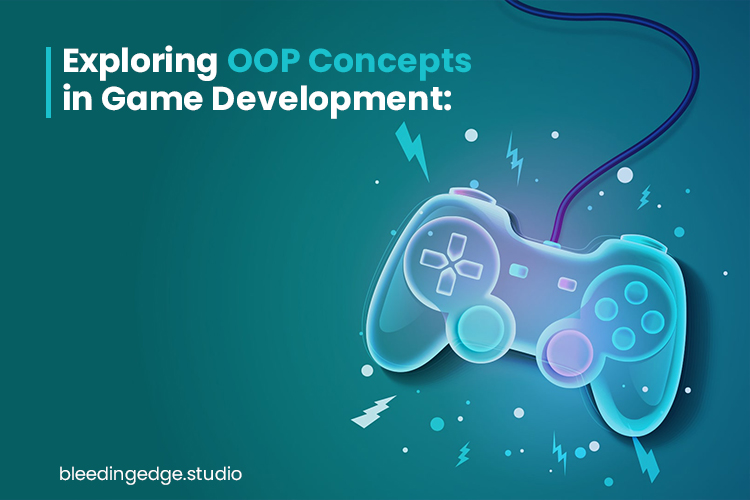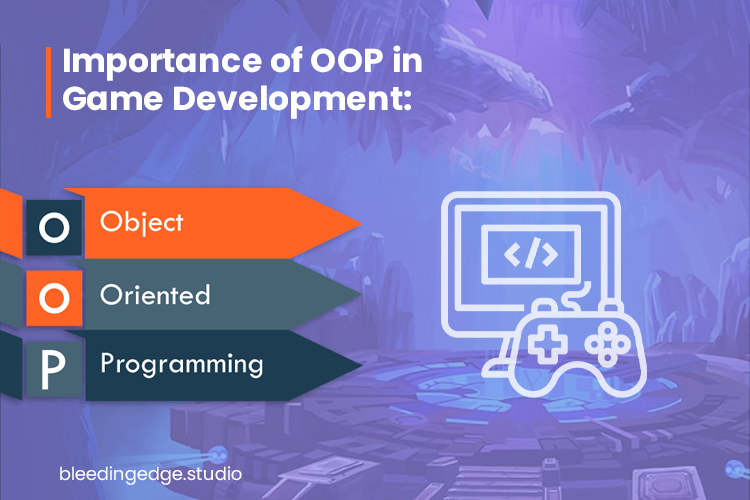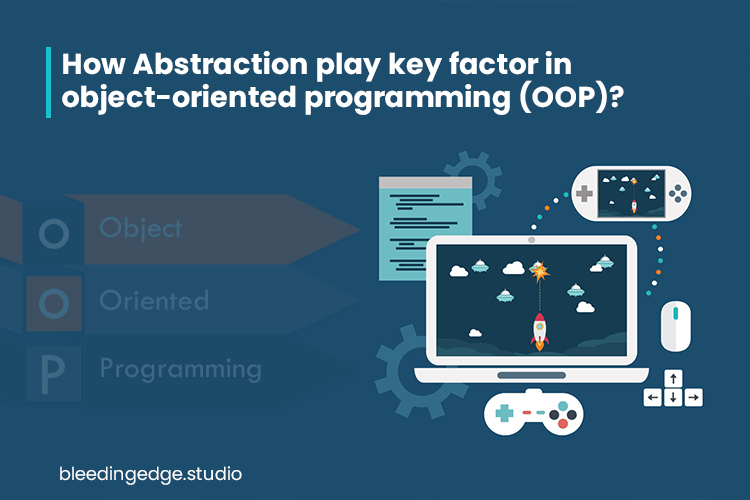Overview of Object-Oriented Programming Play:
OOP stands for Object-oriented programming. It is a program concept based on objects that can contain data and code that operates on them.
In object-oriented programming, objects are instances of classes that define the data and behavior of the object. The data is stored in variables, also known as fields or properties, and the behavior is defined by methods, which are functions that can manipulate the object’s data.
Object-oriented programming also emphasizes concepts such as inheritance, polymorphism, and encapsulation. Inheritance allows a subclass to inherit the properties and methods of its superclass. Polymorphism allows objects of various classes to be treated as if they are of the same class. Encapsulation hides the internal details of an object and allows it to be accessed only through its public interface.
Exploring Object-Oriented Programming OOP Concepts in Game Development:

Object-oriented programming is widely used in game development as it provides a way to organize code, create modular and reusable components, and model game entities and their interactions naturally and intuitively in object-oriented programming.
Inheritance:
Inheritance is a key concept in object-oriented programming (OOP) that allows a subclass or child class to inherit properties and methods from a parent class or superclass. This means that the child class automatically has access to all the public and protected methods and fields of its parent class and any other ancestors up the inheritance hierarchy.
The extends keyword is used in most programming languages to make a subclass that inherits from a parent class. For example, in Java, the syntax for creating a subclass called ChildClass that inherits from a parent class called ParentClass would be:
public class ChildClass extends ParentClass {
// child class code goes here
}
Once the subclass has inherited from the parent class, it can access any public or protected methods and fields defined in the parent class. Additionally, the child class can define its methods and fields, which can either supplement or override the inherited behavior.
Inheritance is useful because it allows developers to create more specialized classes by extending existing ones without having to rewrite or duplicate code. It also makes organizing and managing code easier since related classes can be grouped hierarchically.
Polymorphism:
Polymorphism is a concept in object-oriented programming (OOP) that allows objects of different classes to be treated as if they are of the same class. This is achieved through two mechanisms: method overloading and method overriding.
Method overloading is a form of polymorphism where multiple methods can have the same name but different parameters. This allows developers to create methods that perform similar operations but with different input parameters. The compiler selects the appropriate method to call based on the number and types of parameters passed to the method.
Method overriding is another form of polymorphism where a subclass implements a method already defined in its parent class. When a function is called on an instance of the subclass, the overridden method is executed instead of the method in the parent class. This allows subclasses to customize or extend the behavior of their parent classes.
Here’s an example in Java:
public class Animal {
public void makeSound() {
System.out.println(“Generic animal sound”);
}
}
public class Dog extends Animal {
@Override
public void makeSound() {
System.out.println(“Bark”);
}
}
public class Cat extends Animal {
@Override
public void makeSound() {
System.out.println(“Meow”);
}
}
public class Main {
public static void main(String[] args) {
Animal animal1 = new Dog();
Animal animal2 = new Cat();
animal1.makeSound(); // Output: Bark
animal2.makeSound(); // Output: Meow
}
}
In this example, we have a parent class called Animal with a method called makeSound(). We then create two subclasses, Dog and Cat, which override the makeSound() method to provide their implementation. Finally, in the Main class, we create objects of the Dog and Cat classes and call their makeSound() methods. Since the objects are of type Animal, but the makeSound() method is overridden in the subclasses, the output will be “Bark” and “Meow”, respectively, in Object-oriented programming.
Polymorphism allows developers to write more flexible and reusable code since objects can be treated as generic types with different runtime behaviors.
Abstraction:
Abstraction is a key factor in object-oriented programming (OOP), which simplifies complex systems by hiding unnecessary details and focusing on essential features. Abstraction allows developers to create models of complex real-world systems that can be represented in a simplified way, making it easier to understand and work with the system.
In OOP, abstraction is achieved through the use of abstract classes and interfaces. An abstract class is a class that cannot be instantiated and is used as a base class for other classes. It can have abstract methods declared but not implemented and concrete methods implemented in the abstract class. Subclasses of an abstract class must contain all the abstract methods.
An interface is similar to an abstract class but contains only abstract methods and constants. It defines a contract a class must implement without specifying how it should be done. A class can implement multiple interfaces, which allows it to inherit behavior from multiple sources in object-oriented programming.
Here’s an example in Java:
public abstract class Shape {
public abstract double area();
}
public class Rectangle extends Shape {
private double width;
private double height;
public Rectangle(double width, double height) {
this.width = width;
this.height = height;
}
public double area() {
return width * height;
}
}
public class Circle extends Shape {
private double radius;
public Circle(double radius) {
this.radius = radius;
}
public double area() {
return Math.PI * radius * radius;
}
}
public class Main {
public static void main(String[] args) {
Shape rectangle = new Rectangle(5, 10);
Shape circle = new Circle(7);
System.out.println(rectangle.area()); // Output: 50.0
System.out.println(circle.area()); // Output: 153.93804002589985
}
}
In this example, we have an abstract class called Shape, which defines an abstract method called area(). We then create two subclasses, Rectangle and Circle, which implement the area() method to provide their implementation. Finally, in the Main class, we create objects of the Rectangle and Circle classes and call their area() methods. Since the Shape class is abstract and cannot be instantiated, we use it as a reference type to create objects in Object-oriented programming.
Encapsulation:
Encapsulation is a basic concept in object-oriented programming (OOP) that refers to bundling data and the methods that operate on that data within a single unit or module in Object-oriented programming.
In OOP, objects are the basic building blocks representing real-world entities or concepts. Encapsulation allows objects to hide their internal state (data) from the outside world and restrict access to it. This way, objects can ensure that their data is accessed and modified only through the methods they expose, known as the object’s public interface in Object-oriented programming.
By encapsulating data and methods within an object, we can achieve several benefits, including:
Modularity: Encapsulated objects can be developed and maintained independently, which makes it easier to change their implementation without affecting the rest of the system.
Abstraction: Encapsulation allows us to define abstract data types, which can be used to model complex systems and hide their implementation details.
Information hiding: Encapsulation allows us to restrict access to an object’s internal state, which helps to prevent unintended modifications and maintain data integrity.
Overall, encapsulation is an important principle in OOP that allows us to create robust, maintainable, and extensible software systems.
In object-oriented programming(OOP), objects and classes are two fundamental concepts that form the basis of the programming paradigm.
An object is a runtime entity that represents an instance of a class. It can be considered a particular class instance with its own set of values for the properties (attributes) and behaviors (methods) defined by that class. For example, suppose we have a class named “Car”. In that case, we can create several objects of the “Car” class, each representing a different car with unique properties and behaviors in Object-oriented programming.
Conversely, a class is a blueprint or template that defines objects’ structure, properties, and behaviors. It defines the attributes an object of that class will have and the methods to be called on those objects. For example, a class named “Car” might have attributes like “make”, “model”, “year”, and methods like “start()”, “stop()”, and “accelerate()”.
In OOP, we use classes to create objects. When we create an object, we instantiate (or initialize) it by calling the class’s constructor method. This creates a new object instance and allocates memory for its attributes.
Classes can also be used to create hierarchies of related objects using the concept of inheritance. Inheritance lets us create a new class by deriving it from an existing class, inheriting all its attributes and methods. This can help us to reuse code and avoid code duplication.
Overall, the concepts of objects and classes are central to OOP, allowing us to create modular, reusable, and maintainable code in Object-oriented programming.
Importance of OOP in Game development:

Object-oriented programming (OOP) is widely used in game development for its many benefits, including code organization, modularity, extensibility, and maintainability. Here are some of the key reasons why OOP is important in game development:
Organization: Game development often involves complex systems with many interacting components. OOP allows developers to organize their code into modular, reusable, and maintainable units, making it easier to manage and update the code over time.
Modularity: OOP supports the creation of reusable code modules that can be easily adapted and combined to create new game features. This can speed up development time and reduce the amount of code duplication required.
Extensibility: OOP provides a flexible framework for extending and modifying game features. Developers can easily add or modify new features without affecting the rest of the codebase in Object-oriented programming.
Encapsulation: OOP supports encapsulating game logic into objects, which helps reduce code complexity and increase code readability. Encapsulation also helps to protect the internal state of game objects from external interference, improving code reliability and security.
Inheritance and polymorphism: OOP supports inheritance and polymorphism, allowing developers to create game object variations based on existing classes. This can be useful for creating different enemies, weapons, or levels while reusing common code in Object-oriented programming.
Object-oriented programming is an important programming paradigm in game development that can help developers create robust, maintainable, and extensible games. It allows game development teams to manage complexity, reuse code, and deliver high-quality games that can be easily updated and expanded over time.


